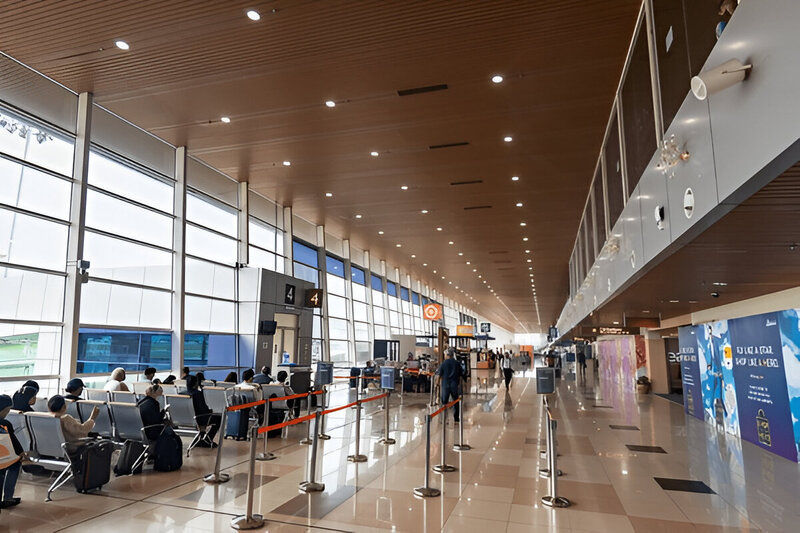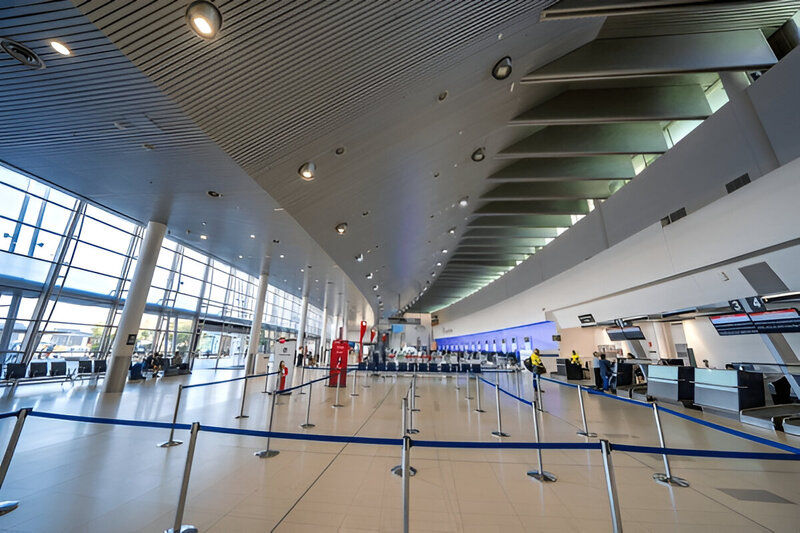How Illuminated Ceiling Airports Support Sustainable Airport Design
- Lara Buck
- Aug 21
- 4 min read

With new air passengers added every day to a large number of air passengers from the past, pressure is mounting on the aviation industry to be sustainable. Sustainable design trends in airports around the world support energy efficiency systems, carbon footprint abatements, and pleasing passenger experiences. One truly innovative architectural design that is having an immense impact on this sector is illuminated ceiling airports systems.
Illuminated ceiling airports merge state-of-the-art lighting technology and modern ceiling design that maximize sustainability while considering aesthetics and functionality. This article views the illuminated ceiling airports as one important consideration to sustainable airport design and discusses its environmental, operational, and experiential benefits.
Illuminated Ceiling Airports: Energy Efficiency and Reduced Carbon Footprint in Airports
One of the ways illuminated ceiling airports encourage a sustainable airport design is in the reduction of energy consumption. Airports are considered some of the most energy-hungry buildings across the world, needing efficient lighting in vast terminal spaces, lounges, retail shops, and corridors.
Energy-Efficient LED Technology
Today, illuminated ceiling systems incorporate energy-efficient LED systems concealed behind a translucent stretch ceiling membrane. Compared to traditional fluorescent or incandescent sources, this backlit system has unmatched energy efficiency. In other words, it uses less than 20%-40% of the electricity used by fluorescent and incandescent lighting, and has a specified life of more than 50,000 hours. This drastically reduces replacement and maintenance efforts.
Optimized Light Distribution
The airport system ensures a proper distribution of light throughout its space without any dark spot or harsh adjacent shadows. Whereas conventional point-source lighting creates inefficient lighting use requiring increased wattage for uniform lighting, illuminated ceiling systems with backlit technology give natural soft diffused light over wider areas consuming lesser power.
Integration of Natural Light
A sustainable airport design relies heavily on integrating natural daylight to reduce the need for artificial lighting. Illuminated ceiling airports work in conjunction with natural daylight by providing constant lighting in times of insufficient sunlight, such as night times or during overcast days. This blending of artificial lighting with daylighting reduces energy consumption while ensuring the brightness level remains comfortable to passengers indoors.
Intelligent Lighting Controls
Ceiling lights in airports further enhance their sustainability by being integrated into intelligent lighting control systems. Such systems incorporate sensors and dimmers that measure the occupancy level, receive daylight information, and track the time of day to automatically adjust light output. This means light will only be illuminated when needed, saving operational costs in the process, while energy wastage is also minimized.
Environmental and Material Sustainability of Illuminated Ceiling Airports

Environmental sustainability combines the savings on energy to the use of modern materials and production methods that allow a greener construction to manufacture illuminated ceiling airports.
Green and Recyclable Materials
These stretch ceiling membranes used to fashion illuminated ceiling airports are environmentally friendly products, made mainly out of PVC, yet are tough and resistant to chemicals. They are, being lightweight, tough and reduce both material waste and transportation emission in comparison with conventional heavier ceiling materials.
Their ceiling membranes, therefore, can be completely removed and recycled at either the end of a building's life cycle or during renovation. This further aids in sustainable waste management practices in airport construction projects.
Reduced Cost of Maintenance and Projection of Longevity
Durability equals sustainability. Illuminated ceiling airports are designed to last for decades with minimal degradation in material quality or performance. They resist mold, mildew, UV rays, and yellowing, to retain their structural and aesthetic integrity, making replacements and refurbishing less requisite.
This longevity minimizes the environmental impact associated with the manufacturing, shipping, and installing of replacement ceiling materials thereby giving the building a lower lifecycle carbon footprint.
Contribution Towards Green Building Certifications
When airports aim for globally recognized green building certifications such as leed (Leadership in Energy and Environmental Design) or breeam (Building Research Establishment Environmental Assessment Method), illuminated ceiling airports serve to their favor. Their energy-efficient lighting, sustainable materials, and reduced maintenance come in alignment with the certification criteria about energy use, environmental quality, and materials.
Such certifications would not only further sustainable development but would also mark the airport with signature identity as a modern responsible infrastructure manager before the eyes of the environmentally conscious travelers and stakeholders.
Enhanced Passenger Experience and Operational Benefits Through Sustainable Illuminated Ceiling Airports
Sustainable designs of airports are not only green in nature, but they also create healthy environments for travelers to work and enjoy. Illumination in ceiling airports lends itself to all of the above, both from a function and aesthetic standpoint.
Enhanced Visual Comfort and Wellbeing
Lighting significantly facilitates the mood of the passengers and makes them feel cozy. Among the top strategies for illuminated ceiling airports is providing glare-free illumination that spreads light evenly, reducing eye strain and blurring visions. This approach helps set a calming ambience while keeping activities clearly in view amid the common hustle and bustle of airport happenings.
Bright Ideas and Innovations In Architectural Designs
With the lights probably taking away some ideas from an architect, lit ceiling airports would be a blank canvass for architects to fill with fascinating and exhilarating spaces for an airport. Curved, vaulted, or even three dimensional ceiling shapes may include dynamic lighting effects, changing colors or intensities with added vibrancy and uniqueness to terminals.
This flexibility provides the opportunity for airports to create diverse spaces with different atmospheres; whisper-quiet lounges bustling from arrival halls, lively retail corridors while keeping sustainable lighting practice throughout.
Operational Efficiency and Safety
Airport operations can benefit from an illuminated ceiling in airports. Better, more uniformly distributed lighting is to improve wayfinding and lessening accident incidents. Ideally, good illumination would also enable surveillance and security measures, which are critical in large transport hubs.
Cost savings on energy can be achieved as efficient lighting systems are paired with sustainable ceiling materials, and these savings can then be devoted to other operational needs or sustainability projects/intents.
Conclusion
As every airport in the world aims to position itself smarter, greener, and more passenger-friendly, the role of illuminated ceiling airports in sustainable airport design is critical. Huge energy savings; use of environment-friendly materials; enhancement of occupant well-being; positive impacts on airport imagery as well as efficiency in operations.
Airport designers and owners will likely embrace the future: illuminated ceiling airports in which sustainability cohabits with passenger experience would produce environmentally sound, financial viable, visually stunning structures, and the added bonus is that this innovation will support global environmental goals. Eventually, this will establish a new standard in vision and feel of airports for decades to come.



















Comments